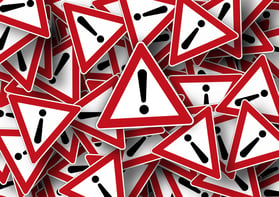 "Can you please pay attention?"
"Can you please pay attention?"
How often have you, as a teacher or parent, said this?
I'm sure you've done it many times, because you know that your message will not get through to the listener unless they pay attention.
Neuroscientist and attention expert, Dr Steve Miller spoke to The Learning Capacity Podcast about attention and learning, how we need to turn our brain’s attention spotlight on, and how this essential learning skill can be developed.
LISTEN TO THE PODCAST
“If you don't attend, it's much more difficult to learn,” he said. “If we worry about things like learning and memory, attention provides the initial filter.
Dr Miller’s wide ranging discussion covered:
Your Brain’s spotlight
For attention to occur, the first thing that has to happen is you have to put your brain’s spotlight on and recruit the energy and your ability to hold the spotlight on so you can recognise the information, discriminate it, figure out whether you have seen it before, put it in context, and possibly encode it.
Attention & learning
You really don't have a lot of learning going on without paying attention to start with.
Effective learners have the ability to be persistent in recapturing their attentional spotlight and reapplying it to the information that they learned.
Teaching & attention
“One of the things that I am trying to do is make technology available to teachers and learners so they get feedback on what it means to actually pay attention,” said Dr Miller.
Teachers want students to become more aware of how their brains are involved in learning.
The process of attending
We are not giving 100% of our attention all the time, but we need to be able to allocate it on short notice. We have short periods of inattention but then we refocus our attention on the information.
For example a person may be attentive for 15 to 20 seconds and then for 2 or 3 seconds they are inattentive and then they are able to reengage again.
Difficulties arise when children can't allocate that on-demand attention at short notice.
Research Studies
In randomised trials with students, Dr Miller saw that those who could refocus well after short periods of inattention achieved better learning results.
Attention is a skill that can be developed
Attention is a skill students can practice, and can develop alongside the curriculum material they are trying to learn.
By using neuroscience technology we can give kids the ability to track their attention. That helps them improve it and shows them that they have some control over it.
Attention training
Dr Miller said: “With current neuroscience technology you can wear a headset while you are at work, while you are at home studying, or while you're reading a book you need to understand for work.”
“This will give you feedback about when your attention lapsed, so you can go back over the material you missed. It also helps you improve your ability to attend.”
Related Posts
A New Way to Measure & Predict an Individual’s Attention?
Attention, Listening Skills & Fast ForWord: Dr Martha Burns update
Ruben Struggled to Read & Pay Attention: How did Fast ForWord Help?




